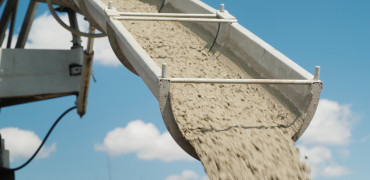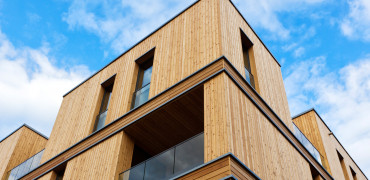Green schools are essential for future growth, for future generations and our planet.
Green schools not only protect our environment but they keep the students and teachers healthy and above all they promote environmental literacy to all our children.
Green school construction not only significantly lowers greenhouse gas emissions but also reduces energy costs and improves student health and motivation.
On average children spend two thirds of their waking hours inside school buildings and therefore benefits such as clean air quality, healthy lighting, safe and green outdoor spaces are essential requirements for our future generations.
The greenest way to construct a building is to use the materials sourced from right where the building is to be located.
Keeping the outdoors out
A child of school age spends 85% of their day inside the school building. Indoor air quality can be up to a 100 times worse than that outdoors. At least 50% of classrooms have poor air quality and ventilation and this alone can increase respiratory illness.
Fresh air is critical for health and alertness. Poor indoor air quality has been linked to a reduction in the ability to concentrate, calculate and memorise.
The tool kit to improve air quality for our children is far and wide and externally, covers topics such as highway measures, reducing drop off activity, improved pedestrian and cyclist environments and a switch to low emission vehicles including buses. Both construction and planning strategy are crucial and Green infrastructure essential.
Indoor air quality
Within the building, schools that install energy recovery ventilation can reduce air contaminants from outdoors whilst at the same time significantly reducing heating, ventilation and energy loads.
Incorporating green building measures in our buildings and school designs can reduce absenteeism rates dramatically.
Investing for the future
Why not invest? For example higher reflective roofs last longer than conventional roofs and green roofs are expected to last 30-50 years longer. These roofs lower air temperature and cut the cost of air conditioning and heating loads.
With brilliant design and innovative construction it is possible to foster an environment that creates not only smarter students but all the while leaving a much smaller impact on the planet.
Globally there are many examples of the diverse way in which to achieve a green school status. In the UK, one of the most eco-friendly school buildings can be found in Hatfield.
Design and innovation
Howe Dell primary school was commissioned by Hertfordshire county council and is an experiment and example of how green and sustainable a school building can be.
The toilets flush using rainwater, roofs are green, the building is heated using the playground and the carpets are made from tiles.
The school features the world’s first Inter-seasonal heat transfer system which was constructed under the playground. The solar heat that falls on the tarmac is stored and later released in the winter to heat the school.
The same technology can be cleverly used to harness the cold of the winter air to cool the building in the summer.
The school also features solar panels for hot water, photovoltaic panels that supply electricity, skylights that flood the classrooms with daylight to cut lighting bills, super thick walls and windows that reduce heat loss.
Sustainable bamboo
Other exceptional global examples are The Green School in Bali which is made entirely from sustainably harvested bamboo.
The school runs on a clean energy system from solar power, it has a biomass boiler and a micro hydro generator.
Sustainability is the core element, this is not only taught but experienced by the future generations.
A modular approach
Project Frog are considered as construction pioneers and have designed a modular high tech zero energy classroom.
It is a highly engineered kit that allows a school to get up and running in a short time frame.
The design not only encompasses a speedy installation but the cleverly conceived space has been designed to be flooded with indirect sunlight and is engineered of course to provide clean air. An essential requirement for all children of school age.
And here in the UK
Here in the UK, construction giant, Wilmott Dixon has also been pioneering the use of off-site construction to improve quality and speed of build in the education sector.
Their approach offers bold designs and spaces that inspire pupils, all delivered with an absolute certainty of time, cost and quality and built to be as energy efficient as possible.
Localisation
The greenest way to construct a building is to use the materials sourced from right where the building is to be located.
A school in Oaxaca Mexico uses rammed earth campus studios, with the architect creating a truly organic campus that includes an earth beamed stone walled building, ample courtyards and native low water plantings.
Large windows provide plenty of natural light, and cross ventilation keeps the indoor from becoming stuffy. The massive walls minimise noise pollution and provide natural air conditioning for the pupils.
Herwig Blankertz vocational school in Germany is another example with impressive green credentials. It is actually a WW2 armoury that has been cleverly transformed.
Whilst the structural elements of the building remain as was, the new roof is covered in translucent solar panels and glass. Providing an all important natural-light source whilst producing 225KW of clean energy.
Singapores green roofed art school at Nanyang technological university is both elegant and creative. Two large sweeping green roofs turn the entire building into a landscape, the roof is smart and clever. The thick carpet of grass controls storm water, significantly reducing the need for cooling loads and adds a dramatic biodiversity to the campus.
So with so many successful and innovative examples of what we can achieve through clever construction and design, it seems that all that is lacking now is the will of society to invest in buildings such as these along with the future of our children.
What better investment can we make in our future than in building sustainable schools?
Kirsty Hammond is editor of Specifier Review




